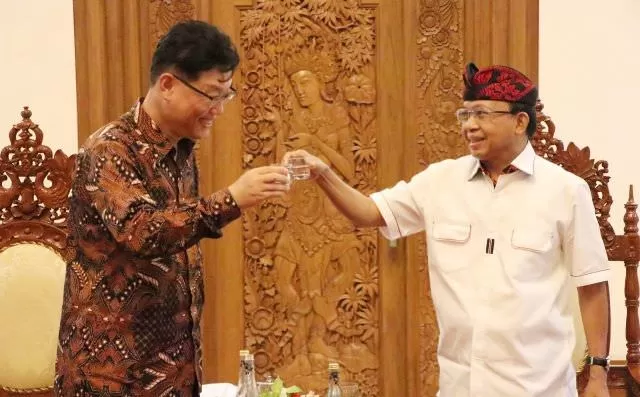Arak Bali, a traditional drink from the Island of the Gods, has long been an integral part of Balinese life. Today, Arak Bali is not only recognized as a local beverage but is also being introduced as a warm welcome drink for tourists visiting Bali.
Arak Bali is an alcoholic beverage made through the fermentation and distillation of natural ingredients such as coconut, aren, or lontar sap. The production process has been passed down through generations, making it an inseparable part of Balinese culture and tradition.
In 2022, Arak Bali was officially designated as an Intangible Cultural Heritage of Indonesia, solidifying its position as a symbol of Bali’s cultural wealth.
One of the most well-known Arak Bali-producing regions is Tri Eka Buana Village in Sidemen District, Karangasem Regency. This village is renowned for its high-quality arak and its traditional production methods.
The production of Arak Bali begins with the tapping of sap from coconut, aren, or lontar trees. The collected sap is then fermented for several days until it reaches a certain alcohol content.
After fermentation, the alcoholic sap undergoes a distillation process to separate the alcohol from other components, resulting in arak with the desired alcohol level.
As part of efforts to preserve and promote Arak Bali, Bali Governor Wayan Koster has encouraged hotels across the island to serve arak as a welcome drink for their guests.
This initiative has been well received by the hospitality industry. In fact, more than 70 percent of hotels in Bali have adopted Arak Bali as a welcome drink or incorporated it into their cocktail menus.
Serving Arak Bali as a welcome drink not only introduces this traditional beverage to tourists but also provides an authentic cultural experience from the moment they arrive on the Island of the Gods.
This initiative is expected to enhance appreciation for local products and support the livelihoods of Balinese arak artisans.
With these efforts, Arak Bali is no longer just a traditional drink enjoyed by locals but has also become a symbol of Balinese hospitality and cultural richness, proudly shared with the world. (BT)





